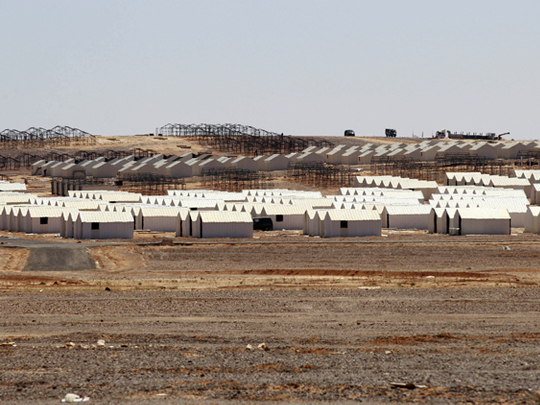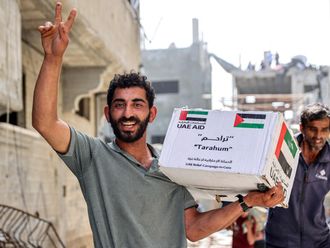
Azraq, Jordan: Jordan opened a new, sprawling tent city on Wednesday to accommodate tens of thousands more Syrian refugees who are expected to flee their country’s fighting - another grim indicator for a deadly war now in its fourth year.
The new Azraq refugee camp is built to host 130,000 people, said Brig. Gen. Waddah Lihmoud, director of Syrian refugee affairs in Jordan. It cost $63.5 million dollars to build, the UN said.
Once full - a process expected to take months - the camp will outstrip Zaatari, currently Jordan’s largest camp. That camp is now the country’s fourth largest city and the second largest refugee camp in the world. The Dadaab camp in Kenya is the largest.
The huge tent city underscores the staggering effect of Syria’s refugee problem on its neighbours.
Jordan already hosts some 600,000 registered Syrian refugees, forming 10 per cent of the country’s population. Jordanian officials estimate the real number is closer to 1.3 million Syrians.
The conflict has caused some 40 per cent of Syria’s prewar population of 23 million to flee their homes. There are nearly 2.7 million Syrian refugees, mostly in neighbouring countries, and another 6.5 million Syrians have been displaced from their homes inside the country, the UN estimates.
“It shows the situation is not improving in Syria,” said UN official Helene Daubelcour. “I think the neighboring countries are doing their utmost to work on refugees and accommodate them, even though it means a lot of pressure of their resources - financial or natural.”
The Azraq camp stretches for 15km, and lies 90km from the Syrian border, said Lihmoud. There are currently 247 refugees within the camp, and all new Syrians arriving into Jordan will be settled there, officials said. About 600 refugees cross into Jordan daily, the UN estimates.
“One the one hand, it looks like a continuing scenario of hopelessness, in the absence of any diplomatic solution to the crisis,” said Jack Byrne of the International Rescue Committee, one of the aid groups involved in overseeing the process. “On the other hand, it’s been done very well by Jordanian authorities and urban planners to make it as hospitable as possible.”
The camp was built mindful of lessons learnt from the Zaatari camp, said Byrne.
Urban planners and architects worked in its design, spacing out caravans, providing more bathrooms, supermarkets, medical clinics, schools, and organising better water services, he said.
“It’s been months in the planning,” Byrne said. “It’s going to be better, friendlier place for refugees,” he said.
Still, the camp does not have electricity, because of its distant location. The UN intends to provide solar lanterns to families as they arrive, and use solar-powered street lights, it said in a press release as the camp opened.
Jordan’s Zaatari camp - a stretched out metropolis of tents and camps - was hastily thrown together when the Syrian crisis first began, as refugees began wildly pouring into neighboring countries.
Zaatari camp currently holds over 100,000 people, although it was only meant to hold 85,000, Byrne said.
It is widely seen as a miserable, often dangerous place. Unemployed men lout in the camp, and women said they feared using distant toilets at night.
But despite Azraq’s new, better-planned facilities, it’s unclear if Syrians will choose to flock there. Syrian’s aren’t allowed to work in Jordan, keeping them impoverished and restless. Many illegally work in urban areas, where Syrian refugees prefer to live. Others are engaged in small trades within refugee camps. With only 243 families so far, it still doesn’t have the economic opportunity offered in other areas.










